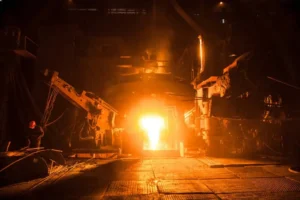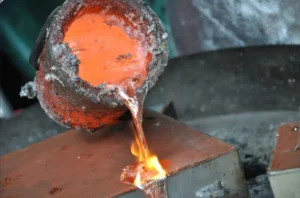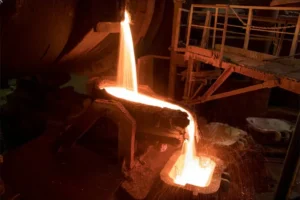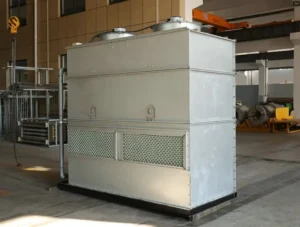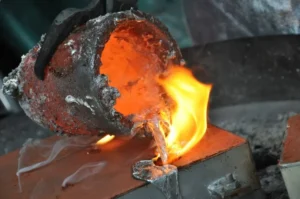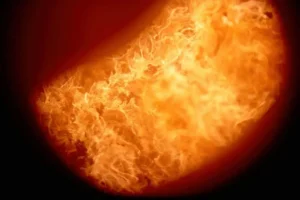Bước vào một xưởng đúc hiện đại, Và bạn có thể mong đợi được nhìn thấy một sự bốc lửa, khói, “Người sắt”-Cảnh esque. Nhưng thực tế có thể làm bạn ngạc nhiên - thay vào đó, Bạn có thể tìm thấy những hàng yên tĩnh, lau dọn, Thiết bị gần như không có ngọn lửa biến đổi hiệu quả các khối kim loại lạnh thành sắt nóng chảy. Các “ảo thuật gia” Đằng sau này, Và nhân vật chính của chúng ta hôm nay, là lò cảm ứng.
Ngày xửa ngày xưa, lò nung cao chót vót là biểu tượng tuyệt đối của một xưởng đúc, Xác định sức mạnh và quy mô với Coke và ngọn lửa. Tuy nhiên, thời gian đã thay đổi. Hôm nay, ngày càng nhiều vật chất chất lượng cao, Từ các thành phần ô tô chính xác đến các bộ phận gió nặng, được sinh ra từ lò nung cảm ứng.
Vì thế, Làm thế nào có cái khóa dường như thấp “Người yêu mới” đúc nó “Đánh vần” để giành được sự ủng hộ của toàn bộ ngành công nghiệp? Đây không phải là về việc nâng cấp thiết bị; Nó là một cuộc cách mạng sâu sắc về chất lượng, hiệu quả, và một tương lai xanh hơn.
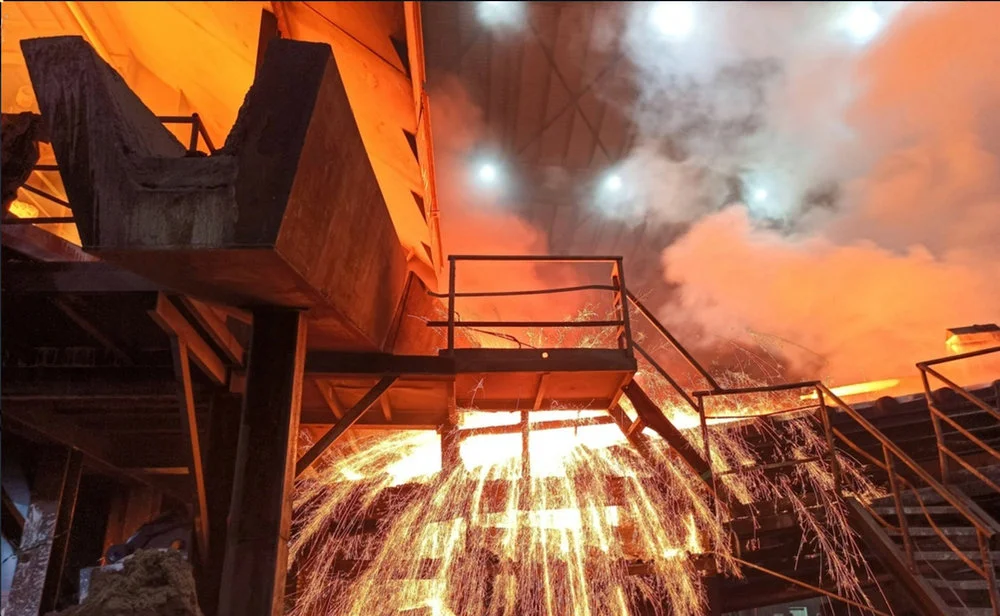
Ảo thuật 1: Từ “Tấn công dữ dội” ĐẾN “Kiểm soát nhiệt độ chính xác” - Một bước nhảy vọt về chất lượng
Hãy tưởng tượng nấu ăn. Một lò nung cupola truyền thống giống như một cái bếp đốt bằng gỗ siêu năng lực, nơi mà sức nóng hoàn toàn tùy thuộc vào cảm giác của đầu bếp Master - một động tác sai và nó có thể bị cháy hoặc chưa chín. Một lò nung cảm ứng, Tuy nhiên, giống như một bếp cảm ứng thông minh hàng đầu.
Bí mật của nó nằm ở Cảm ứng điện từ sưởi ấm. Hiện tại không trực tiếp chạm vào kim loại; thay vì, Nó tạo ra một từ trường tạo ra chính kim loại “run rẩy” và tạo ra nhiệt. Điều này mang lại một số lợi ích mang tính cách mạng:
- Đồng phục “Phòng tắm hơi”: Kim loại nóng đều từ trong ra ngoài, loại bỏ quá trình quá nhiệt hoặc không được công việc. Thậm chí tốt hơn, Lực điện từ tự động “Khuấy” sắt nóng chảy, như cho nó một massage toàn thân, cho phép tất cả các yếu tố hợp kim kết hợp hoàn hảo.
- “Không thể ngu ngốc” Độ chính xác Kiểm soát nhiệt độ: Nếu bạn muốn 1500 ° C, nó có thể kiểm soát ổn định nhiệt độ ở 1500°C±5°C. Sự kiểm soát nhiệt độ cực cao này có nghĩa là ít bị oxy hóa hơn và kim loại nóng chảy tinh khiết hơn, cuối cùng tạo ra vật đúc hoàn hảo với hiệu suất vượt trội và cấu trúc dày đặc.
- Nguyên chất “Nguồn gốc”: Vì nó không đốt cháy carbon, về cơ bản nó loại bỏ việc đưa vào “yếu tố không mong muốn” như lưu huỳnh và phốt pho. Đây là một ơn trời cho việc sản xuất sắt dẻo và thép hợp kim đặc biệt có yêu cầu cao.
kết quả? Nói lời tạm biệt với những khuyết điểm khó chịu như độ xốp và vết nứt, làm cho mỗi lần đúc rời khỏi nhà máy “học sinh danh dự.”
Ảo thuật 2: Tạm biệt bầu trời khói – Vì Trái đất, và cho chính chúng ta
trong quá khứ, ống khói của xưởng đúc là một đô thị “điểm đau.” Nhưng bây giờ, lò cảm ứng là “biến đổi” ngành công nghiệp này, làm cho nó “tươi hơn.”
- Tiết kiệm năng lượng là chìa khóa: Lò nung cảm ứng tự hào về tốc độ sử dụng năng lượng điện của hơn 75%, sử dụng mỗi kilowatt giờ một cách hiệu quả. Ngược lại, lò nung cupola truyền thống thường có hiệu suất nhiệt ít hơn 50%, với một lượng lớn nhiệt và năng lượng bị lãng phí thông qua khí thải. Tiết kiệm aren chỉ bằng hóa đơn tiền điện nhưng trong tài nguyên trái đất có giá trị.
- Trở thành một Môi trường Mô hình vai trò: Đây là điểm quan trọng nhất. Không đốt có nghĩa là không “Kẻ thù môi trường” như carbon dioxide hoặc sulfur dioxide. Lò nung cảm ứng tạo ra khói và bụi tối thiểu, và một hệ thống thu thập bụi hiệu quả có thể làm cho chúng “thì thầm yên tĩnh.” Trong thời đại ngày nay, Ở đâu “tính trung lập carbon” là một chương trình nghị sự toàn cầu, Chọn một lò nung cảm ứng không chỉ là một quyết định kinh tế; Nó có một trách nhiệm xã hội quan trọng.
- Yên tĩnh hơn, Thân thiện với công nhân hơn Môi trường: Không có máy thổi điếc tai và tiếng ồn vòng cung, Hội thảo trở nên yên tĩnh hơn nhiều. Đây không chỉ là mối quan tâm đối với sức khỏe của công nhân mà còn “Sức mạnh mềm” Điều đó giúp một doanh nghiệp hiện đại thu hút tài năng.
Ảo thuật 3: Các lô nhỏ, Đáp ứng nhanh “Máy biến áp” - Tính linh hoạt vô song
Trong thị trường ngày nay, Nhu cầu của khách hàng ngày càng “thất thường”: đơn đặt hàng nhỏ, Các giống đa dạng, Thời hạn khẩn cấp. Truyền thống “Một kích cỡ phù hợp với tất cả” mô hình rõ ràng có thể theo kịp. Lò nung cảm ứng, Tuy nhiên, là a “máy biến áp” sinh ra cho loại này “thời trang nhanh” sản xuất.
- “Du lịch” theo yêu cầu: Từ khởi đầu lạnh đến lần đầu tiên của sắt nóng chảy, Mất chưa đầy một giờ. Sản xuất ngày hôm nay, Tắt cửa để bảo trì vào ngày mai, Khởi động lại ngày hôm sau - không có vấn đề gì cả! Khả năng ngay lập tức này cho phép lập lịch sản xuất linh hoạt.
- Lập tức “Biến đổi” Kỹ năng: Một lần nấu chảy có thể tạo ra gang xám thông thường, và tiếp theo có thể chuyển ngay sang thép hợp kim đầy thử thách. Đơn giản chỉ cần làm trống lò, tải tài liệu mới, và nó có thể nhanh chóng “biến đổi” để đáp ứng nhu cầu sản xuất hoàn toàn khác nhau. Tính linh hoạt này cho phép các xưởng đúc dễ dàng nắm bắt mọi cơ hội thị trường thoáng qua.
- “ngon miệng” Đó không phải là kén chọn: Cho dù đó là thép phế liệu, Sắt lợn, hoặc lợi nhuận nội bộ còn sót lại, lò cảm ứng có thể “lấy tất cả,” nấu chảy chúng thành sắt nóng chảy có giá trị một cách hiệu quả. Điều này mang lại cho các nhà máy sự tự do hơn trong việc thu mua nguyên liệu thô, cho phép lập ngân sách và kiểm soát chi phí cẩn thận.
Phần kết luận: Lựa chọn lò nung cảm ứng đồng nghĩa với việc lựa chọn tương lai
Vì thế, tại sao các xưởng đúc hiện đại ngày càng ưa chuộng lò cảm ứng?
Câu trả lời đã rõ ràng. Nó không còn là một thiết bị tan chảy mà là một giải pháp toàn diện kết hợp chất lượng cao, Hiệu quả cao, Uyển chuyển, và thân thiện với môi trường. Nó giúp các doanh nghiệp casting giành chiến thắng trong tương lai trong cuộc thi thị trường khốc liệt với các sản phẩm vượt trội, chi phí thấp hơn, và phương pháp xanh hơn.
Sự thay đổi từ lò nung sang lò cảm ứng không chỉ đơn thuần là lặp lại công nghệ; Nó là một minh họa sống động về một ngành công nghiệp cổ đại bao gồm sự đổi mới và đạt được sự tự cách mạng. Lần tới khi bạn thấy những vật đúc chính xác đó lặng lẽ làm việc trong ô tô, tàu cao tốc, hoặc tuabin gió, Hãy nhớ rằng sự sáng tạo của họ có thể có nguồn gốc từ hội thảo lò cảm ứng yên tĩnh nhưng mạnh mẽ đó.
Làm thế nào để bạn nghĩ rằng việc áp dụng rộng rãi các lò cảm ứng sẽ thay đổi hơn nữa xu hướng phát triển trong tương lai của ngành công nghiệp đúc?


